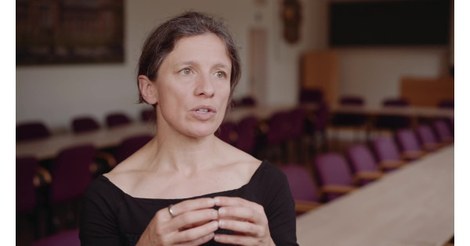From bad seed to central player in a circular and sustainable food system - Veerle Fievez
Livestock farming, in 2020 still ‘the scapegoat’ in the debate on climate change, eutrophication and the acidification of sensitive natural areas, will in 2050 (again) play a central role in a balanced and sustainable food supply within a circular food economy. In 2050, the sector has acquired a new social ‘license to produce’, achieved through a synergic approach: strong livestock reduction, lower methane production by ruminants, the banning of feed materials suitable for human consumption and the ability to select and manage 'the right animal in the right place’.
Various shifts are at the basis of the reduction in livestock. The Western consumption level of animal protein has halved compared to three decades ago, while in regions suffering from nutrient malnutrition the consumption of animal products has increased to a well-balanced level. In addition, a sustainable increase in animal productivity in these regions has reduced the number of animals in livestock farming. Moreover, nowadays, next to the nutritional needs of the animal and the price of feed materials, animal nutritionists use key figures that quantify land use and the impact on environment and climate to optimize rations. Similarly for grasslands: biodiversity, soil organic matter dynamics, carbon sequestration potential and water management are no longer hierarchically subordinate parameters compared to nutritional quality and biomass yield.
The choice of feedstuffs has been extended and restricted at the same time: the animal feed sector no longer has access to human-edible feed resources or feeds originating from non-marginal soils suitable for arable farming. Non-human-edible agrifood side streams are now basic ingredients for animal feed. Compared with a quarter of a century ago, the valorization of these side streams has become more successful due to biotechnological (pre)treatments, which among others, greatly increased the digestibility of lignocellulose-rich products and the fractionation of streams for specific applications. On the other hand, new feed sources have emerged such as insects, seaweed and algae, but also microbial protein, produced by means of renewable energy, fixation of carbon dioxide and recycled ammonia and phosphorus.
Important insights have been gained in the interaction of the animal’s microbiome and the environment on the one hand, and the physiology, genetics, health and behavior of the animal on the other hand, from birth to adulthood. Several of these interactions, which are at the basis of individual animal differences, can now be monitored by the farmer through sensors, big data analysis tools and practical interpretation apps. Thus, despite large animal groups, a customized individual animal management has become feasible, as well as a targeted administration of medication and nutritional supplements.
Research at our faculty has made a strong contribution to the development and optimization of new feed materials, the acquisition of basic insights in microbiome-animal-environment interactions and the interpretation of sensor data to monitor these.

